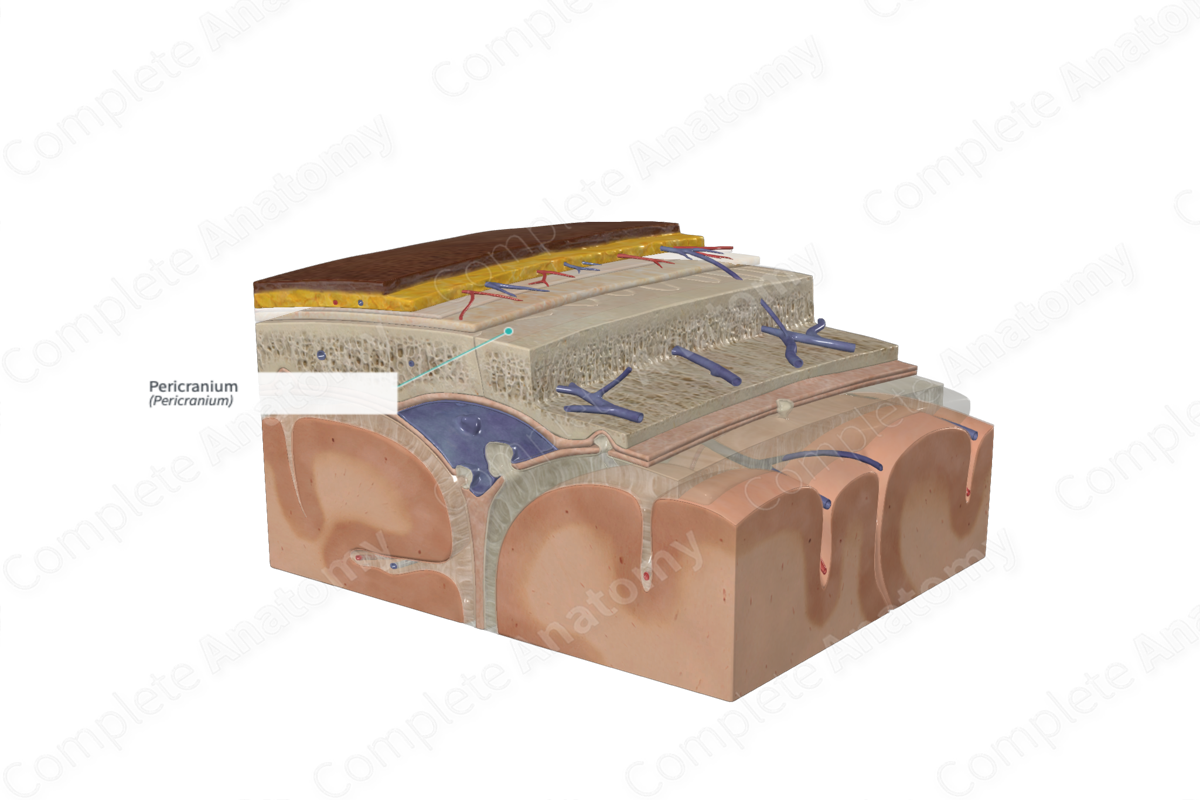
Quick Facts
The pericranium is the external periosteum of the skull (Dorland, 2011).
Related parts of the anatomy
Structure
The pericranium, also known as the periosteum of the skull, is the fifth and deepest layer of the scalp. The pericranium is a dense fibrous membrane covering the neurocranium. The outer surface of the pericranium is loosely attached to the epicranial aponeurosis via the loose connective tissue. The inner surface of the pericranium firmly attaches to the calvaria. Due to its elasticity, it can be easily removed from the calvaria except at the location of the suture lines where it is firmly attached. The pericranium is generally thin at the frontal area and thicker at the posterior aspect of the skull (Brennan, Mahadevan and Evans, 2015).
The pericranium is supplied by the supraorbital and supratrochlear (arising from the internal carotid artery) and the superficial temporal artery (arising from the external carotid artery) (Brennan, Mahadevan and Evans, 2014).
Key Features/Anatomical Relations
The pericranium is the deepest layer of the scalp. It is deep to the loose connective tissue of the scalp and superficial to the cranial bone. It is continuous with the deep temporal fascia at the superior temporal line (Brennan, Mahadevan and Evans, 2015).
Function
The pericranium provides structural support and a minimal blood supply to the underlying cranium (Brennan, Mahadevan and Evans, 2015). It is also important during bone growth and remodeling following fracture as it supplies cells with nutrients required for bone formation (Kierszenbaum, 2007).
List of Clinical Correlates
—Cephalohematoma
References
Brennan, P. A., Mahadevan, V. and Evans, B. T. (2015) Clinical Head and Neck Anatomy for Surgeons. CRC Press.
Dorland, W. (2011) Dorland's Illustrated Medical Dictionary. 32nd edn. Philadelphia, USA: Elsevier Saunders.
Kierszenbaum, A. L. (2007) Histology and Cell Biology: An Introduction to Pathology. Mosby Elsevier.
